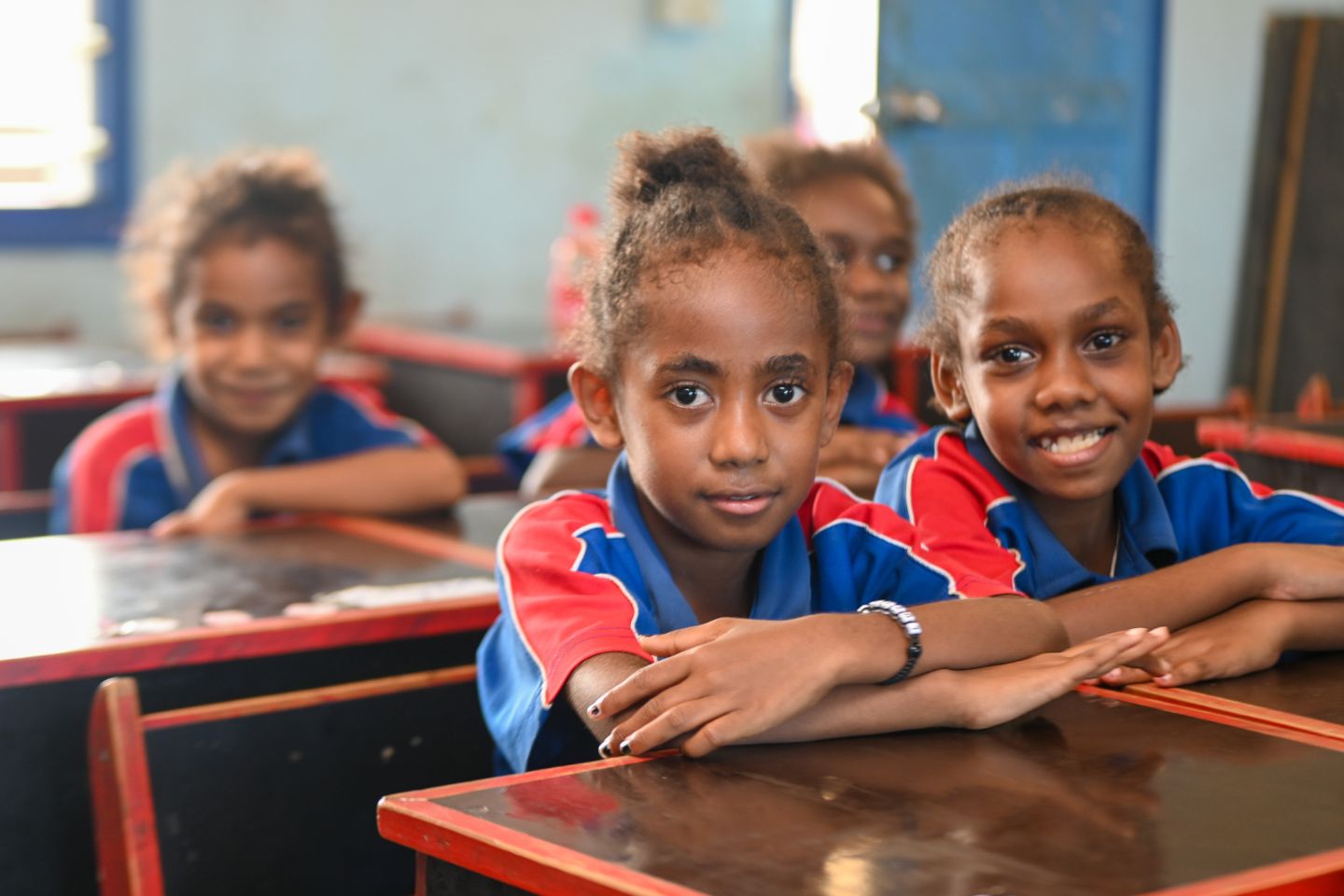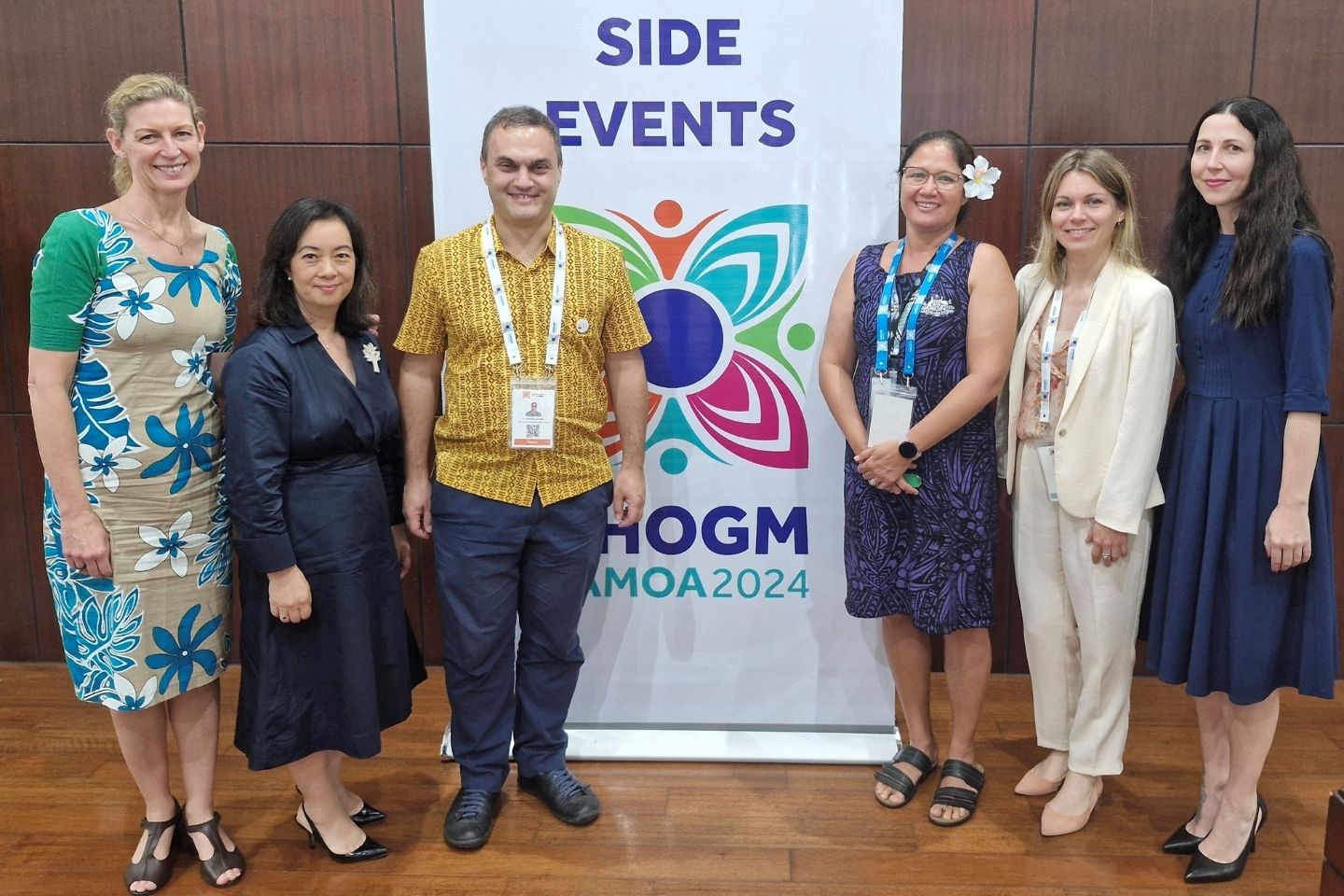
What is the impact of technology on teaching in the Pacific?
Research 23 Oct 2024 8 minute readACER has led a case study on teachers and technology in the Pacific for the latest regional UNESCO Global Education Monitoring Report.
Home to 45.5 million people scattered across 30 million square kilometres, the Pacific is a unique geographic and cultural region. The rapid growth of digital technology offers the promise of greater access to education for the region’s diverse population. However, widespread adoption of technology in education has been hindered by limited and costly infrastructure, particularly in terms of internet connectivity.
The 2024 Pacific Regional UNESCO Global Education Monitoring Report shines a spotlight on the impact of technology in education settings in the Pacific. Developed in partnership with the Commonwealth of Learning (COL), the Pacific regional report includes 17 countries – Australia, Cook Islands, Federated States of Micronesia, Fiji, Kiribati, Marshall Islands, Nauru, New Zealand, Niue, Palau, Papua New Guinea, Samoa, Solomon Islands, Tonga, Tuvalu, Tokelau and Vanuatu.
The report is structured around the 4 key policy areas of the Pacific Regional Education Framework (PacREF): quality and relevance; learning pathways; student outcomes and wellbeing; and the teaching profession. The report investigates the challenges of using technology as a tool and its potential for helping countries within the region to achieve their education goals.
The report was launched today during the Commonwealth Heads of Government Meeting (CHOGM) 2024, taking place in Samoa. This is the first time that CHOGM has been convened in a Pacific Small Island Developing State, and will gather leaders from across the Commonwealth to deliberate priority issues, strengthen collaboration and build a strategic future for the Commonwealth. ACER researchers from the Education and Development program, Anna Dabrowski, Yung Nietschke, and Elizabeth Cassity were invited as guests for the launch of the report in Samoa and other discussions on education.

Image (from left to right): Elizabeth Cassity (ACER), Yung Nietschke (ACER), Manos Antoninis (UNESCO GEM Report), Ariane Stevenson (DFAT), Francesca Endrizzi (UNESCO GEM Report), and Anna Dabrowski (ACER).
Extensive background research by local research teams and independent experts informs the Pacific regional report, including an important case study by ACER. Drawing on our growing expertise on technology and education, and current research focused on system resilience in the Pacific, ACER researchers were commissioned by the UNESCO GEM Report to conduct a study focused on the impact of technology on teachers and the teaching profession. ACER also recently contributed to the GEM Southeast Asia Regional Report through a case study analysis of technology and education in Lao People’s Democratic Republic.
‘The launch of the first UNESCO GEM Report for the Pacific is a significant milestone,’ says Ms Hannah Bleby, Director, Development Advisory Services from the Australian Department of Foreign Affairs and Trade. ‘Investment in this report demonstrates the commitment of partners in the region to understanding and addressing the unique challenges and opportunities of integrating technology into education across the Pacific.’
This study provides important insights into the experiences of teachers as they navigate technology use and its potential across the Pacific. Based on a comprehensive review of literature, secondary analysis of the Pacific Islands Literacy and Numeracy Assessment (PILNA) data, and interviews with education stakeholders involved in the implementation of educational technologies in schools and higher education settings in the region, several key findings emerge.
An important finding of the study is that education policies and practices designed to improve the digital literacy of students have expanded in the Pacific. However, teachers appear to have little support or time to develop their own skills and report a general lack of preparedness to use technology.
The study also found that teacher training institutes are attempting to improve the digital skills of pre- and in-service teachers. However, many teachers in the Pacific report insufficient infrastructure in schools, a lack of access to devices and data.
In the Pacific, teachers are expected to learn about and engage with pedagogies and practices that incorporate educational technologies. However, poor infrastructure limits the opportunities to apply these new skills in the classroom.
Seventy-seven percent of teachers who responded to the PILNA survey reported not having a device to teach with.
The study found that donor-driven investments in technologies appear to be influencing education technology reforms in parts of the Pacific. There is evidence to suggest that such investments often come at great cost and without adequate evidence to support their implementation and long-term sustainability.
There is little evidence that technology is being used in ways that promote inclusive classroom practice, or student wellbeing. There also appears to be limited safeguarding measures or teacher training mechanisms focused on keeping students safe online.
Despite ongoing research highlighting the expanding role of educational technology, there is an ongoing need to support teachers in the Pacific to integrate technology into their practice in meaningful ways to support student learning and wellbeing. The study suggests that educators continue to bear the burden of enacting ICT policies into classroom practice, often without the adequate resources and training to do so. A more coordinated approach to investments in education technology across the Pacific is needed to drive widespread and meaningful integration of technology to support teaching and learning.
‘ACER's case study on teachers and technology underscores the need for enhanced support, infrastructure and professional development to ensure that technology can meaningfully improve teaching and learning in this diverse and geographically dispersed region,’ says Ms Bleby.
Learn about CHOGM and the Launch of the 2024 Regional Report:
Commonwealth Heads of Government Meeting
Launch of the 2024 GEM Report on technology in education in the Pacific
Read ACER’s case study on teachers and technology in the Pacific:
Global education monitoring report 2024, Pacific: technology in education: a tool on whose terms?
Explore the regional and global UNESCO GEM Reports:
Technology in education: Global Education Monitoring Report
2024 Pacific Regional Report – Technology in Education
More on ACER’s research on educational technology:
Technology in education: a case study on Lao People's Democratic Republic
Teaching over technology: educational priorities during COVID-19
